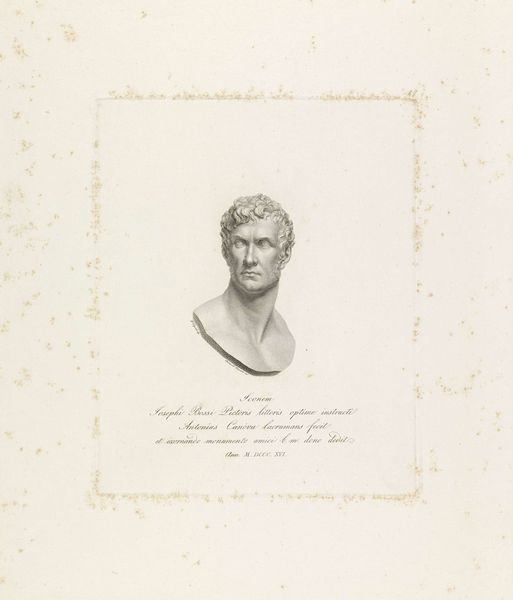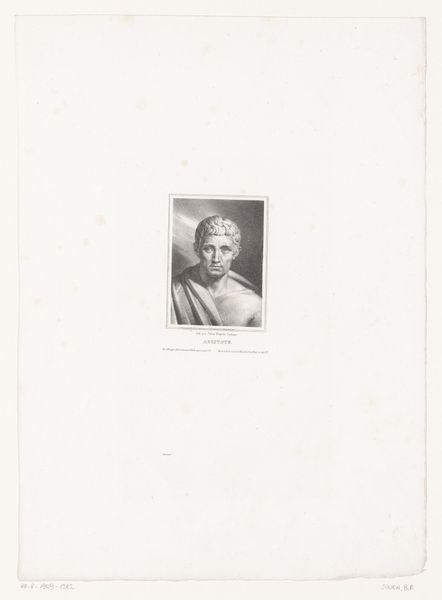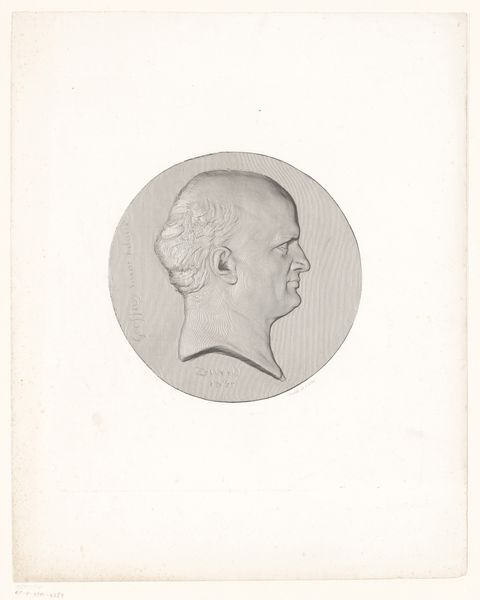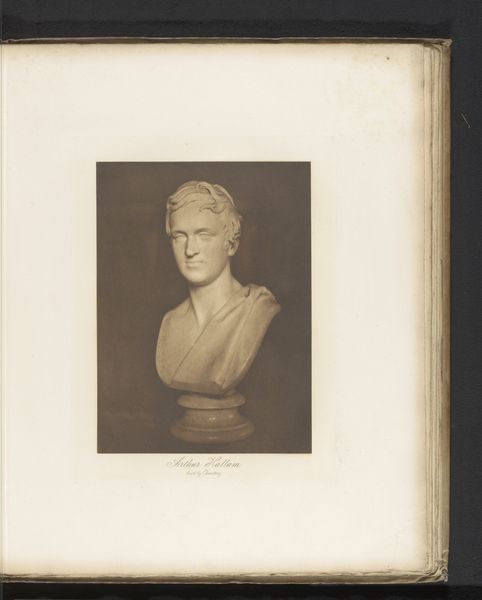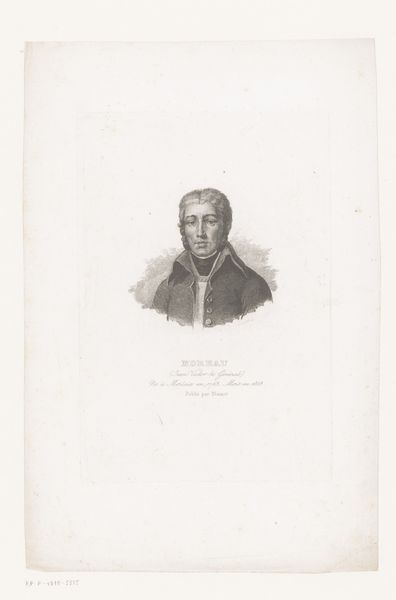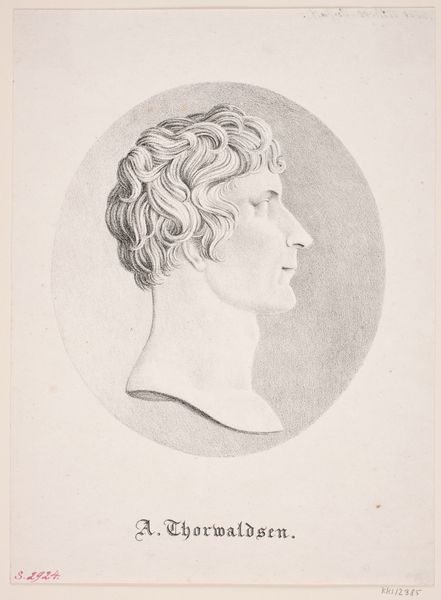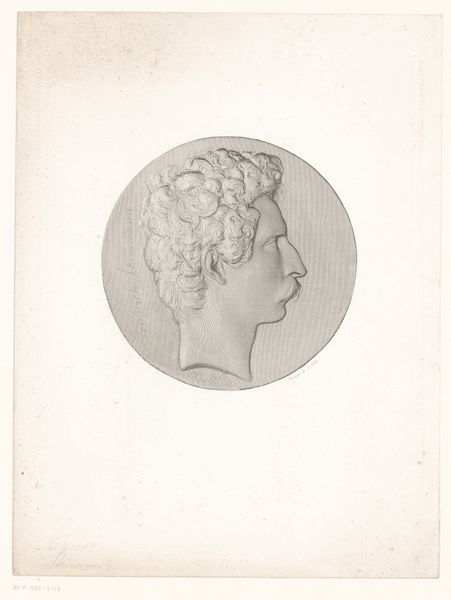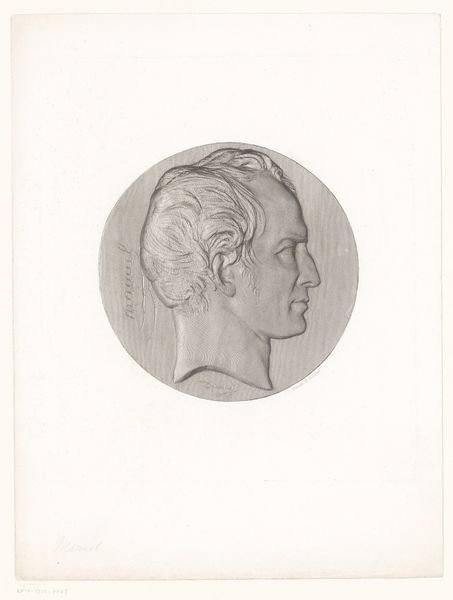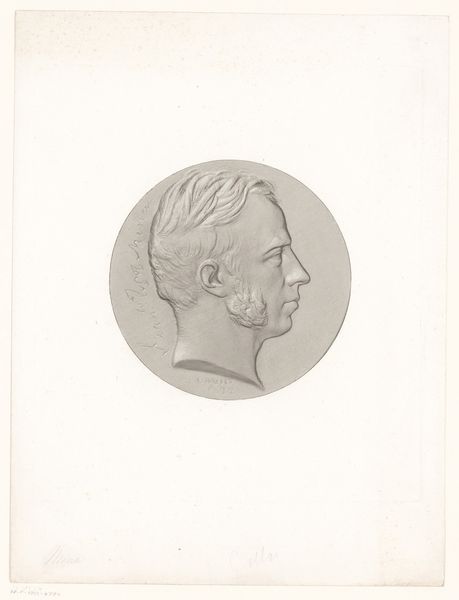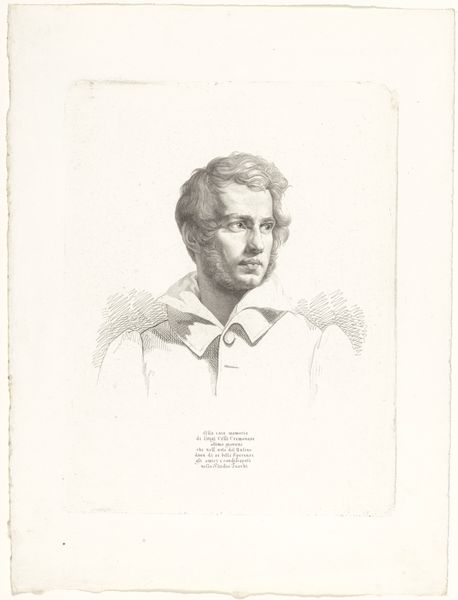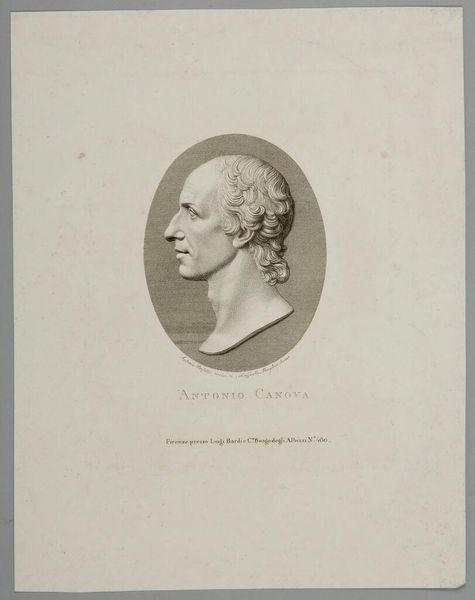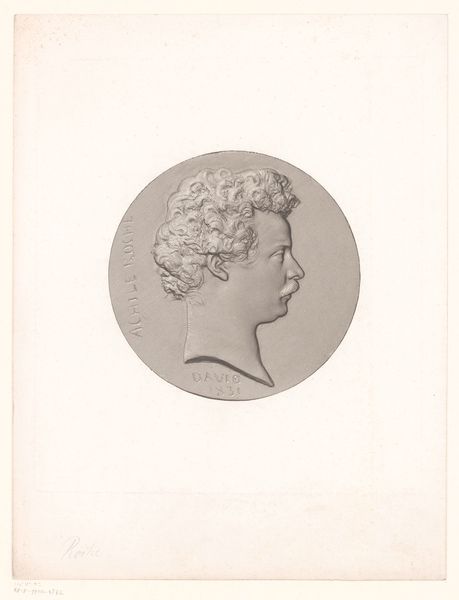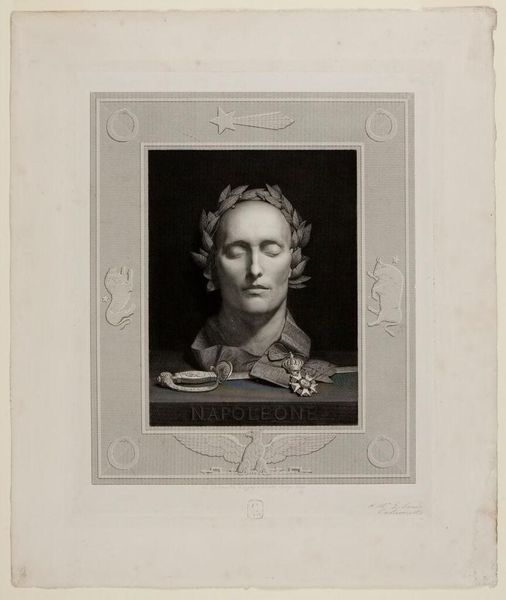
drawing, pencil
#
portrait
#
pencil drawn
#
drawing
#
neoclacissism
#
classical-realism
#
charcoal drawing
#
pencil drawing
#
pencil
#
portrait drawing
Dimensions: height 250 mm, width 174 mm
Copyright: Rijks Museum: Open Domain
Editor: This pencil drawing from sometime between 1812 and 1838, titled "Portretbuste van Antonio Canova" by Angelo Bertini, it strikes me as… well, austere. It's a portrait, very classical in style, but feels more like a study than a celebratory image. What do you see in this piece, particularly in light of the period it was created? Curator: Well, your initial reaction is astute. It's easy to read it as austere because, fundamentally, Neoclassicism operated within a specific cultural and political project. It consciously revived classical forms as a reaction against the perceived excesses of the Rococo. It sought to represent a return to reason, order, and civic virtue—qualities highly prized in the wake of the Enlightenment and during the rise of nationalism. What do you think that meant in practice, though? Editor: If I had to guess... the goal of this image may not to capture a likeness so much as promote ideals associated with classical antiquity, linking Canova, as a prominent artist, with this tradition. Curator: Exactly! And consider the role of academies in this period. This drawing likely circulated within or around the academic environment. Didactic tools such as this enforced neoclassical principles but also served the career advancement of the draughtsman. What about the drawing makes it effective in doing that work? Editor: The shading makes it look like marble and thus sculptural – really effective when thinking about neoclassical art and linking to Ancient art too. It's an intriguing reminder that even seemingly simple portraits like this are deeply embedded in cultural movements and institutions of the time. It changes how I will now view neoclassical portraiture. Curator: Absolutely. Looking at art through the lens of cultural and institutional context gives us such rich insights. It changes the questions we ask, doesn’t it?
Comments
No comments
Be the first to comment and join the conversation on the ultimate creative platform.
